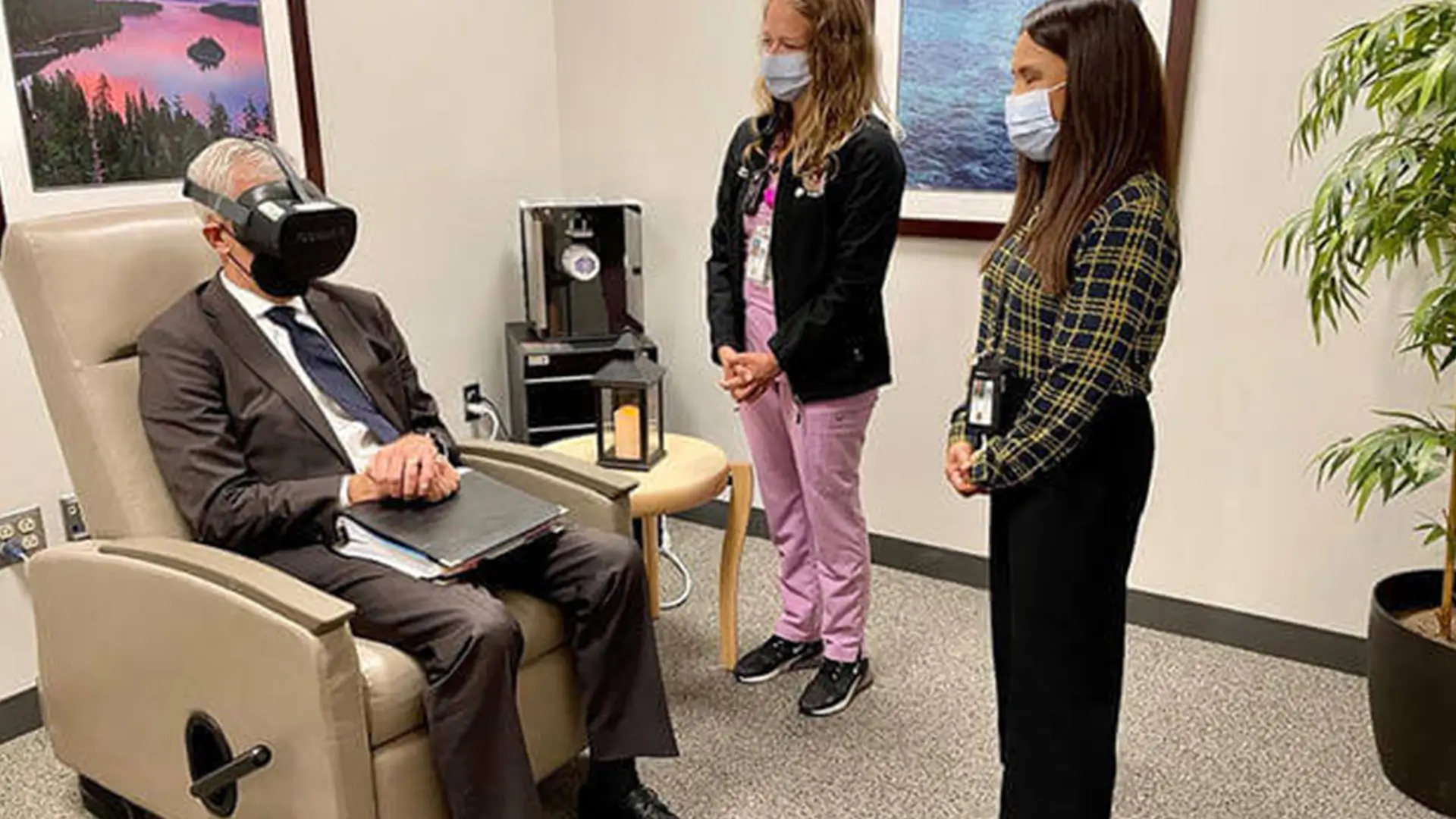The convoy is under attack. A roadside bomb obliterates the Humvee that had been leading the column and gunfire rains down on the windshield in front of you, with the screams of civilians seeping through the developing holes in the vehicle. The driver next to you steps on the gas and the Humvee lurches forward, the roar of the truck drowning out the radio operator’s call for air support.
That’s what patients experience in a new breed of treatment design to help combat the effect of post-traumatic stress disorder, or PTSD. BraveMind, one of the developers of virtual reality (VR) treatments for psychological disorders that are being used by trained therapists, created the improvised explosive device attack scenario. Treatments like this one are currently live at more than 60 veterans’ hospitals, universities and military centers.
Some look to help veterans process past traumas. Others transport them to peaceful environments to provide a bit of peace.
Jonathan Spier, deputy executive director of the Long Island State Veterans Home, has been working on virtual reality as a treatment for years. In an interview, he said he “felt strongly there was great potential” and has started to see results.
Three hundred and fifty veterans are under his charge at the home who have served in every conflict from World War II up through Iraq and Afghanistan. His oldest veteran is 106 years old and still thriving.
“When he tried the VR goggles, his reaction was priceless,” Spier said. “He was so excited.”
As Spier was developing the program, a friend introduced him to Chris Brickler, CEO of MyndVR, who had already collected an impressive library of audiovisual content that featured a wide array of virtual locations such as national parks, museums and destinations worldwide. Brickler and Spier have been collaborating since they met.
“Patients don’t generally enjoy therapy,” Brickler said. He added that a VR program, known as digital therapeutics in the field, “makes it fun for them.”
“It’s something they look forward to, so the outcomes are better,” he said.
MyndVR has a big focus on elderly veterans. Thanks to a recent grant from the nonprofit charity Bowlers to Veterans Link, it will be bringing the technology to veterans’ homes across the country. The videos for elderly vets, like those who served in Vietnam and Korea, are completely different from those who fought in Iraq and Afghanistan.
Instead of VR depicting troops under attack, PTSD treatment for Vietnam veterans typically uses what Spier calls distraction, or reminiscent therapy.
The scenes are peaceful and soothing, such as being part of a safari on the Tanzanian savanna, a casual stroll through the Metropolitan Museum of Art, splashing the surf on a national shoreline, or hiking the Alps.
These are all part of a massive library of videos collected by MyndVR, many of which came from National Geographic, PBS, renowned museums, and creators worldwide.
“The history of virtual reality goes back to the ’90s,” said Skip Rizzo, director of Virtual Reality Medicine at the University of Southern California’s Institute of Advanced Technology. “Back then, there was exposure therapy where someone with a phobia of, say, crowds would be put in different public situations. Along with a therapist, and over time, the individual generally became more comfortable, and the phobia would become extinguished. Using repeated cycles was proof the brain could be fooled, and the phobia would no longer be an issue.”
Those were the early days, when very few had access to developing VR systems.
